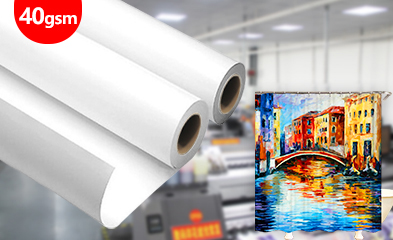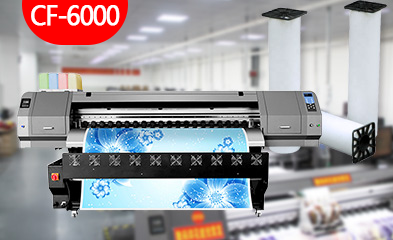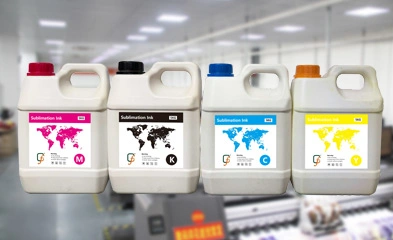HOT SALE
Phone:+86-15215969856 E-Mail: 396838165@qq.com
Dye migration is a big problem in heat printing. It can mess up bright designs, making them look faded or mixed in ways you didn’t want. Whether you’re printing on sportswear, fashion pieces, or custom clothes, stopping dye migration is vital for creating top-notch, long-lasting items that make customers happy. This guide shares six simple tips to help you prevent dye migration. From picking the right materials to tweaking your heat press, these ideas—combined with reliable products from Changfa Digital—will help you get steady, professional results every time.
What is Dye Migration and Why It Matters in Heat Printing
Dye migration is a frequent but annoying issue in heat printing and sublimation. It happens when dyes in fabrics get reactivated by heat during printing. These dyes then move or “bleed” into your design. This causes colors to fade, mix oddly, or look wrong, leading to low-quality products.
How Dye Migration Happens During Heat Transfer
Heat transfer, especially at high temperatures, makes dyes in fabrics like polyester turn into gas and shift. This movement can change the look of a printed graphic or vinyl design. Dye migration shows up in screen and heat printing when heat wakes up the fabric’s dyes. This is a bigger problem in sublimated clothes, where colors are locked deep into the fabric fibers.
Common Materials Likely to Have Dye Migration
Synthetic fabrics are most at risk. With athleisure and performance wear becoming popular, fabrics like polyester, spandex, and nylon are common. These often have dyes that don’t stay stable under heat. Sportswear fabrics, like 100% polyester interlocks or bird eye knits from Changfa Digital, need careful handling during heat printing.
Visible Signs of Dye Migration on Finished Items
The clearest sign of dye migration is a surprise color change in your design. For example, white text on a red shirt might turn pink after pressing. Sometimes, this happens right away. Other times, it shows up days later as dyes keep moving after the press.
Tip 1: Pick the Right Heat Transfer Materials
Choosing the right materials is key to getting steady print quality and avoiding dye migration.
Choosing Dye-Resistant Transfer Films
Use transfer films made to block dye migration. These films often have a special layer that stops fabric dyes from reaching your design. Some transfers come with a blocker to prevent dye bleeding. Changfa Digital provides PET cold-peel DTF films, like single-sided and double-sided types. These films work well because of their top-quality coating. Changfa Digital is a professional sublimation paper manufacturer and offers digital printing services for over 15 years. It’s a factory for Sublimation Paper, handling everything from base paper to coating, slitting, and shipping worldwide.
Why High-Quality Vinyl and Inks Matter
Cheap vinyls or inks may not have the right makeup to resist dye migration. Use eco-friendly solvents that are safe and nontoxic. Look for inks with a wide color range and bright shades. These features in Changfa Digital’s Sublimation Ink help keep colors true, even under heat stress.
Tip 2: Control Heat Press Temperature and Time
Managing your heat press settings is critical when working with synthetic fabrics.
Best Temperature Ranges for Polyester and Synthetics
For most polyester clothes, keep the heat press at about 300°F (149°C) or lower. This helps reduce dye activation. Use a low-temperature transfer and apply it at Ascendancy 300°F or less to avoid dye issues.
How Too Much Heat Causes Dye Migration
Too much heat makes dyes in synthetic fabrics turn into gas. This can happen even without Sublimation Ink. The dyes then bleed into your printed design.
Adjusting Press Time to Reduce Color Bleed
Even with the right temperature, pressing too long can activate fabric dyes. Shorten the press time a bit, but make sure the transfer film sticks properly.
Tip 3: Use Low-Temperature Heat Transfer Solutions
Low-temperature options are a great way to protect sensitive fabrics like athletic wear or sublimated polyester shirts.
Benefits of Low-Temp Heat Transfer Films
Low-temp films lower the risk by reducing time spent at high heat. They also keep stretchy fabrics, like spandex blends, in good shape. Changfa Digital’s PET film products work at lower temperatures, such as 150°C for standard PET film, with short press times of 8–15 seconds. These are perfect for delicate garments. For example, Item No.: PET film (Single sided), Transfer temperature: 150C, Transfer time: 15s.
Fabrics and Uses for Low-Temp Transfers
These films work best on polyester-based sportswear, like Changfa’s GZP series. For instance, Item No.: GZP-001, Fabric name: 100D Intelock, Width: 153cm, Weight: 155gsm, Composition: 100%T. These fabrics are common in athletic clothing.
Tip 4: Test Garments Before Full Production
Testing saves time, money, and your reputation.
Doing Small Tests to Spot Dye Migration
Before starting big production runs, test your transfer on a small piece of each garment batch. Check for color bleeding over a few days after pressing.
How Test Results Help Set the Heat Press
Test outcomes show you the best temperature and time settings for each fabric type. Adjust your settings based on these results before printing large batches.
Tip 5: Add a Dye-Blocking Layer
When printing multi-color designs or on dark fabrics, an extra layer can make a big difference.
Using Dye-Blocker Vinyls or Inks
These special materials create a strong barrier between fabric dyes and your design. A transfer with a blocker is one of the best ways to stop unwanted color changes. Changfa Digital’s Sublimation Ink offers great coverage with its high-density formula. This helps cover underlying colors well. It has a wide color range, including strong black coverage for professional results after transferring.
When to Use a Barrier Layer in Multi-Color Transfers
If you’re putting light graphics on bright backgrounds or printing detailed logos, a barrier layer keeps the design clear and sharp.
Tip 6: Store and Handle Garments Properly
Prevention begins before you even start printing.
Pre-Washing and Drying Tips
Wash garments first to remove extra dye that could bleed during pressing. Make sure clothes are fully dry before using any heat transfer materials.
Avoiding Contamination from Water and Oils
Water or skin oils can mess with sticking or cause uneven heating. Both can lead to dye migration. Wear gloves when handling garments after washing, if possible.
Introducing Changfa Digital: Your Trusted Heat Transfer Supply Partner
Changfa Digital has led the way in digital textile printing for over ten years.
Overview of Changfa Digital’s Product Offerings
Their main products include Sublimation Paper in 40gsm, 50gsm, 60gsm, 70gsm, 90gsm, and 100gsm, with different widths. They also offer high-quality DTF films, including glitter gold types, and fast-drying Sublimation Ink that works with printer heads like Epson I3200 and Kyocera nozzles. Changfa Digital provides all kinds of Sublimation Paper manufacturing and digital printing services. They offer jumbo rolls and custom OEM/ODM solutions with global support from their expert team.
Why Professionals Trust Changfa Digital for Quality
Changfa Digital uses one of the most advanced German coating lines for Sublimation Paper production. With four slitting workshops and ten machines each, they produce up to 3000 tons per month. This ensures steady quality for customers worldwide.
Summary and Key Takeaways
Stopping dye migration needs smart choices in materials, printing methods, garment handling, and supplier partnerships. Here’s what to do:
- Use dye-resistant films and inks.
- Keep press temperatures low.
- Test every batch first.
- Add blocking layers when needed.
- Handle garments carefully before pressing.
- Work with trusted suppliers like Changfa Digital, who know the full printing process.
The reward? Happier customers with bright, lasting prints, no matter how bold your designs are.
FAQs
Q1: What’s the main reason for dye migration in heat printing?
A: Too much heat during pressing activates fabric dyes, especially in synthetics like polyester. These dyes then bleed into your design area.
Q2: Can you fix dye migration after it happens?
A: No, once dyes bleed into the print, they can’t be removed without harming the garment and design. Proper techniques are the only way to prevent it.
Q3: Is dye migration only a problem with dark fabrics?
A: It’s more noticeable on dark fabrics because of color contrast, like white text turning pink. But light synthetics can also have slight bleeding in some cases, so testing is always important.




















